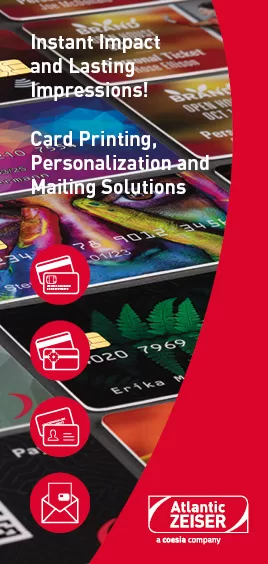
by Joe G TEST 2 | CM Magazine Featured
Serving the Aging Population: Providing an Advanced Payment Card Experience

By Jennifer Kohlhepp – Managing Editor, ICMA
As the population ages, new demands and opportunities occur where payment cards can actively be involved in shaping a customer’s payment journey. The growing number of older people also opens up new customer expectations and business models for banks, where they can build on their long history of serving this demographic. According to the United Nations (UN) development groups:
- More than 26.4% of the people in the developed regions are over the age of 60 years old. For instance, in the United States, there are 23% of people above 60 years old and 23.7% for North America.
- The population of older people (65+ years) in the EU-27 will increase significantly, rising from 90.5 million at the start of 2019 to reach 129.8 million by 2050.
The new opportunities and challenges that appear at the same time include:
- How payment card providers can offer payment cards that better fit this customer segment.
- What card manufacturers need to consider when designing a payment card to reduce barriers in accessibility, usability and explanation.
Traci Skala, director of payment technology and product management at Giesecke+Devrient (G+D) and an International Card Manufacturers Association (ICMA) member, details how card manufacturers can integrate inclusivity and accessibility into their design thinking for payment cards to provide a better customer experience. Plus, she shares some card designs existing in the market that can serve this unique purpose.
Payment Card Design Features to Reduce Barriers
Older customers are an increasingly important demographic. While payments shall be easily accessible for everyone, it is especially imperative to take into consideration the lifestyle and behavior of the older population. As the population continues to age, payment card providers need to adapt to reduce barriers by designing payment cards that are accessible, easy to use and intuitive.
For example, payment cards can integrate:
- Personalized services: Can be tailored to meet the unique needs and preferences of older customers. For example, a card program could be designed to offer financial planning and advisory services, health care payment solutions or senior-specific discounts.
- Physical accessibility: Elements such as larger fonts, tactile elements (raised lettering or braille) or biometric technology to make physical payments easier and more accessible for older individuals with visual or physical impairments.
- Digital capabilities: Digital solutions that are easy to use and accessible. This could include features such as intuitive interfaces, QR code technology and biometric-related technology to make digital payments more accessible for older customers by providing payment cards as a gateway.
- Intuitive interfaces: Clear and concise instructions on mailers or cards that are easy to navigate and understand.
- Community engagement: Community-building features such as reward programs, charitable donations or social media sharing options to promote social engagement among older customers.
- Educational resources: Educational resources, such as cardholder guides or instructional videos that address common concerns and questions that older customers may have about new technologies, financial products and services.
Role of Payment Cards in the Customer Journey
Payment cards have a critical role to play in shaping the payment journey for older individuals, as the population structure is aging. G+D recognizes the new customer demand and provides solutions that enhance accessibility, security and personalization.
The features of its payment card solutions for the aging population comprise:
- Enhanced accessibility: Designed with features such as larger fonts, tactile elements or biometric card technology.
- Increased security: Incorporates advanced security features, such as chip and PIN or biometric authentication.
- Personalization card programs: Can be customized with features such as rewards programs, health care payment solutions or senior-specific discounts to create a more engaging and satisfying payment experience for older individuals.
Payment Industry Priorities
The payment industry needs to prioritize accessibility to ensure that everyone can participate in the payment system, regardless of their age, ability or circumstance. Digital solutions can help by playing a critical role in making payments more accessible. Personalization is key. Payment solutions need to be tailored to meet the unique needs and preferences of different customer segments, including older individuals, people with disabilities and those with limited financial literacy.
Additionally, education is important and requires resources such as workshops, online tutorials and instructional videos. This can help customers understand new technologies, in addition to financial products and services, to make informed decisions about their finances. Finally, collaboration between banks, financial institutions, civil organizations and customers is necessary to design solutions that are inclusive, accessible and empowering for all.





